Hyperreality is a concept in post-structuralism that refers to the process of the evolution of notions of reality, leading to a cultural state of confusion between signs and symbols invented to stand in for reality, and direct perceptions of consensus reality. Hyperreality is seen as a condition in which, because of the compression of perceptions of reality in culture and media, what is generally regarded as real and what is understood as fiction are seamlessly blended together in experiences so that there is no longer any clear distinction between where one ends and the other begins.
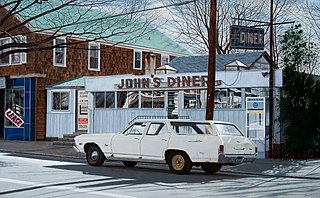
Photorealism is a genre of art that encompasses painting, drawing and other graphic media, in which an artist studies a photograph and then attempts to reproduce the image as realistically as possible in another medium. Although the term can be used broadly to describe artworks in many different media, it is also used to refer specifically to a group of paintings and painters of the American art movement that began in the late 1960s and early 1970s.

Ralph Goings was an American painter closely associated with the Photorealism movement of the late 1960s and early 1970s. He was best known for his highly detailed paintings of hamburger stands, pick-up trucks, and California banks, portrayed in a deliberately objective manner.

Don Eddy is a contemporary representational painter. He gained recognition in American art around 1970 amid a group of artists that critics and dealers identified as Photorealists or Hyperrealists, based on their work's high degree of verisimilitude and use of photography as a resource material. Critics such as Donald Kuspit have resisted such labels as superficially focused on obvious aspects of his painting while ignoring its specific sociological and conceptual bases, dialectical relationship to abstraction, and metaphysical investigations into perception and being; Kuspit wrote: "Eddy is a kind of an alchemist … [his] art transmutes the profane into the sacred—transcendentalizes the base things of everyday reality so that they seem like sacred mysteries." Eddy has worked in cycles, which treat various imagery from different formal and conceptual viewpoints, moving from detailed, formal images of automobile sections and storefront window displays in the 1970s to perceptually challenging mash-ups of still lifes and figurative/landscapes scenes in the 1980s to mysterious multi-panel paintings in his latter career. He lives in New York City with his wife, painter Leigh Behnke.
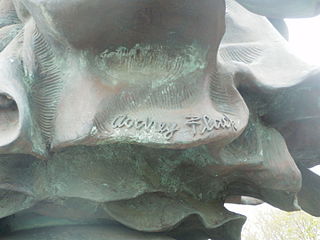
Audrey Flack is an American artist. Her work pioneered the art genre of photorealism and encompasses painting, printmaking, sculpture, and photography.
Denis Peterson is an American hyperrealist painter whose photorealist works have been exhibited at the Brooklyn Museum, Whitney Museum of American Art, Butler Institute of American Art, Tate Modern, Springville Museum of Art, Corcoran MPA, Museum of Modern Art CZ and Max Hutchinson Gallery in New York.
Robert Alan Bechtle was an American painter, printmaker, and educator. He lived nearly all his life in the San Francisco Bay Area and whose art was centered on scenes from everyday local life. His paintings are in a Photorealist style and often depict automobiles.
Thomas Leo Blackwell was an American hyperrealist of the original first generation of Photorealists, represented by Louis K. Meisel Gallery. Blackwell is one of the Photorealists most associated with the style. He produced a significant body of work based on the motorcycle, as well as other vehicles including airplanes. In the 1980s, he also began to produce a body of work focused on storefront windows, replete with reflections and mannequins. By 2012, Blackwell had produced 153 Photorealist works.
A simulacrum is a representation or imitation of a person or thing. The word was first recorded in the English language in the late 16th century, used to describe a representation, such as a statue or a painting, especially of a god. By the late 19th century, it had gathered a secondary association of inferiority: an image without the substance or qualities of the original. Literary critic Fredric Jameson offers photorealism as an example of artistic simulacrum, in which a painting is created by copying a photograph that is itself a copy of the real thing. Other art forms that play with simulacra include trompe-l'œil, pop art, Italian neorealism, and French New Wave.

Robert Neffson is an American painter known for his photorealistic street scenes of various cities around the world, museum interiors and for early still lifes and figure paintings.

Carole A. Feuerman is an American sculptor and artist working in hyperrealism. Feuerman utilizes a variety of media including resin, marble, and bronze. She has been included in exhibitions at the Smithsonian Institution's National Portrait Gallery; and Palazzo Strozzi in Florence, Italy.
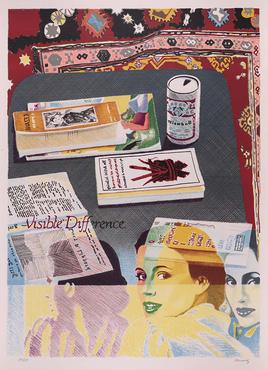
Howard Kanovitz was a pioneering painter in the Photorealist and Hyperrealist Movements, which emerged in the 1960s and 1970s in response to the abstract art movement.

Gus Heinze is an American photorealist painter.
Robert Cottingham is an American artist known for his paintings and prints of urban American landscapes showing building facades, neon signs, movie marquees, railroad heralds and shop fronts.
John C. Kacere was an American painter. Originally an abstract expressionist, Kacere adopted a photorealist style in 1963. Nearly all of his photorealist paintings depict the midsection of the female body. He is considered one of the original photorealists, although he rejected the term.
Louis K. Meisel is an American author, art dealer and proponent of the photorealist art movement, having coined the term in 1969. He is also the owner of one of the earliest art galleries in SoHo at 141 Prince Street. In addition to Photorealism, Meisel is responsible for the resurgence of interest in the sub-set of American illustration identified as "Pin-up", and is the largest collector of original art of both genres. Louis and Susan Meisel own the largest collections of Photorealism and pin-up art in the world.
Roberto Bernardi is a photorealist painter who explores the beauty of everyday life though the reflections and transparencies in his still life paintings, using as his main subject plates and glasses, kitchens appliances, dishwashers, fridges and more recently lollypops and candies.
Raphaella Beatrice Spence is a British photorealist and hyperrealist painter.
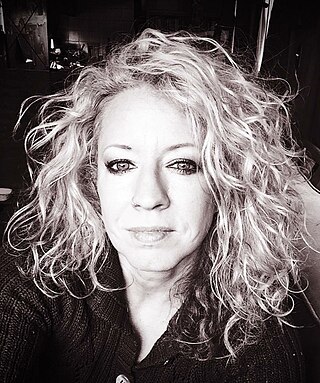
Cheryl Kelley is an American painter known for her photorealism, especially her paintings of classic and muscle cars. Her work has been featured on the cover of Harper's Magazine and can be seen at the Scott Richards Contemporary Art gallery in San Francisco, California, the Bernarducci·Meisel Gallery in New York City, New York, and the Seven Bridges Foundation in Greenwich, Connecticut. In 2009 and 2011 she was a finalist for the Hunting Art Prize, and in 2012 she received a Pollock-Krasner Foundation grant. The art collectors' resource Artsy considers her one of ten "Masters of Photorealism".
Ching-Jang Yao was a Taiwanese painter born in Xiluo, Yunlin.
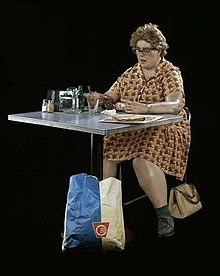

![La hora del te by Mexican painter Magda Torres Gurza [es] (oil on canvas, 90x140 cm). La hora del te.jpg](http://upload.wikimedia.org/wikipedia/commons/thumb/9/9c/La_hora_del_te.jpg/220px-La_hora_del_te.jpg)








